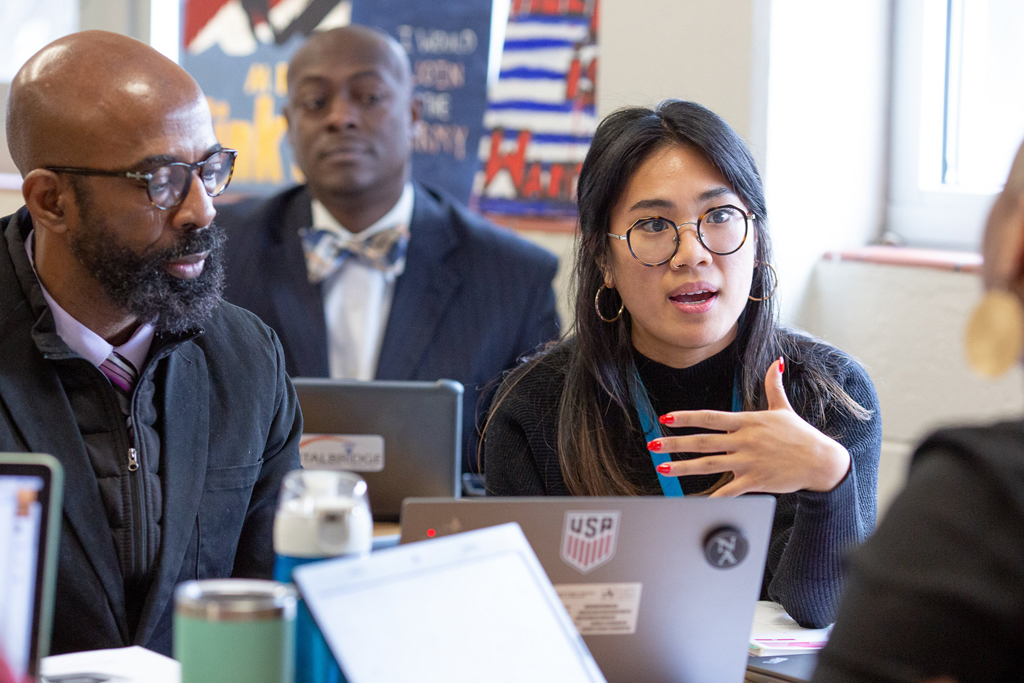3 Steps Ohio Education Leaders Can Take to Promote Teacher Diversity

Diversity, equity, and inclusion (DEI) initiatives are gaining more ground in K-12 education. Specifically, schools are seeking to increase teacher diversity.
Crucial Conversations
Education leaders recognize the need to improve and maintain DEI at their schools. However, the challenge for many is how to actually begin to create a diverse and equitable organization. K-12 schools must consider the perspectives of teachers, staff, and administrators.
Conversation topics related to DEI within the educational setting include defining antiracist work, equitable practices, managing diversity, and how to facilitate diverse narratives across the curriculum, according to Edutopia.
The following steps can help school leaders develop an effective strategy to improve teacher diversity.
Step 1: Set the Room
By setting the room, school leaders establish the purpose and expectations of DEI meetings. The aim with setting the room is for participants to feel discussions and meetings are safe spaces where their voices can be heard and constructive feedback is shared. Facilitators can set up norms for group discussions, including:
- Everyone participates
- Be mindful of participants’ comfort levels
- Feel free to speak your truth and receive feedback
- Listen respectfully
- What is shared in the group stays in the group
Interpersonal dynamics could create challenges along the way. Meeting facilitators must reinforce principles to guide discussions. This brings us to the next step.
Step 2: Establish Shared and Working Agreements
A working agreement has guidelines for how groups of people want to engage with each other. It offers expectations for how they can work together to create positive and productive outcomes.
Working agreements are more than a set of rules; they should represent the organization’s dedication to building a culture of safety, inclusion, and equity, according to Blue State Digital, a technology company specializing in online fundraising, advocacy, social networking, and constituency development.
In order for working agreements to be effective, they must be clear, direct, and important to the group. They are developed by the group and describe the positive behaviors that are necessary to accomplish goals. These shared agreements can be posted on a wall or provided as handouts in meeting rooms.
Step 3: Cultivate a Safe Learning Environment
Together, teachers and administrators can have respectful conversations that achieve points of consensus and allow disagreements to be discussed respectfully.
Faculty and staff meetings can set the standards for an inclusive and equitable school. In the meetings, certain practices can motivate teachers to create safer learning environments in their own classrooms.
According to an Edutopia article, some of the ways educators cultivate a safe learning environment include:
- Crafting or revising materials to indicate that the group or class is committed to diversity and includes discussions and projects that celebrate different identities and cultures.
- Show respect. Focus on what others are saying and pay attention to their emotions and tone.
- Use micro-affirmations to acknowledge another person’s value. Maintain eye contact, summarize what the other person is saying, and ask questions to make sure you understand where someone is coming from.
Successful implementation of DEI initiatives requires in-depth discussions, appropriate resources, and actionable items. It takes time and effort to collectively create positive change. DEI initiatives are major undertakings because they affect school policies, culture, routines, and teacher and student behaviors.
Here are additional resources about the benefits of diversity and inclusion in K-12 education:
- https://www.apa.org/education-career/k12/diversity
- https://tcf.org/content/report/how-racially-diverse-schools-and-classrooms-can-benefit-all-students
Ohio School Leaders and Diversity in Education
John Carroll University (JCU) offers an Educational Leadership program that prepares working educators for a master’s degree in education (M.Ed.) and leadership roles in schools, districts, and educational agencies. This degree program provides a broad range of knowledge related to becoming an education leader who can support and collaborate with diverse groups, and includes coursework such as Multicultural Education and School and Community Engagement.
JCU is a private Jesuit university located in University Heights, Ohio, near Cleveland.
Photo Credit: “History teachers planning” by Allison Shelley for EDUimages is licensed under CC BY 2.0
